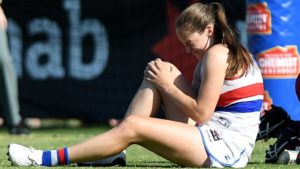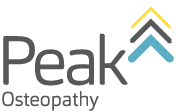Knee injuries and the female athlete
With the advent of AFLW in recent years there has been a sharp increase in the number of young girls and women participating in sport. However, along with the rise in participation, there comes a drastic increase in the number of ACL injuries. Recent evidence suggests that females are up to ten times[1] more likely to suffer from an ACL injury than their male counterparts. Sierra Chandler, trainer for the North Melbourne AFLW team and final year Osteopathic student, takes us through how your Osteopath can help you avoid becoming another statistic.
ACL injuries can occur from contact or non-contact mechanisms. Contact injuries are a result of direct trauma to the knee whereas non-contact injuries are associated with change of direction, jumping, landing and rapid deceleration. As most people are aware rehabilitation from such an injury is often lengthy, invasive and frustrating.
Why are women more at risk?
Women have a set of non-modifiable risk factors which unfortunately are things we cannot change. Non-modifiable risk factors include the shape and angle of bones, hormone levels, increased ligament laxity, and a smaller ACL, all of which have been suggested to increase risk of ACL rupture.
There is also a set of modifiable risk factors that apply to all athletes, which include biomechanics, technique, muscular strength, proprioception and neuromuscular control. These are factors that can be improved and your Osteopath can assist with.
What can women do to reduce their risk of ACL injury?
Given that women have so many non-modifiable risk factors it is important that we work to reduce the risks factors that we can control. It is advised that all players take part in a musculoskeletal screening in order to identify and flag potential risk factors, weaknesses and imbalances that may predispose them to ACL injury. Once these risks factors are identified, your practitioner will prescribe you an appropriate intervention program that will target these factors and reduce your risk of injury. Intervention programs do not completely eliminate the risk of ACL injury given that there are still a set of risks we cannot change, however, it has been shown that intervention programs can reduce the risk of knee injuries by up to 50%,[2] while also enhancing overall performance. Nothing can bulletproof a knee but we can help you control the dangers.
If you would like to know more about ACL injury and what you can do to reduce your own risk, contact one of our osteopaths at Peak Osteopathy. Our osteopaths are trained in detecting risk factors and implementing intervention programs.

[1] https://www.sports-health.com/blog/why-are-women-greater-risk-acl-injuries



